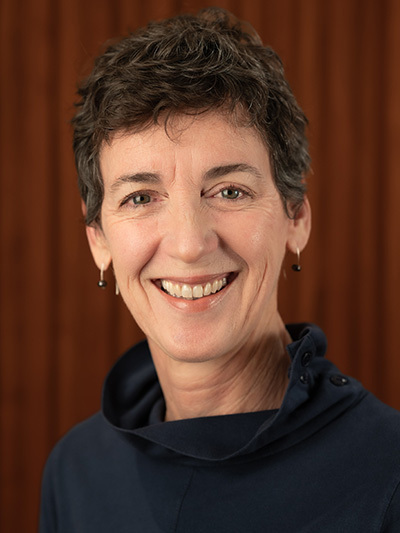
Three faculty members in the College of Arts & Letters have won National Endowment for the Humanities (NEH) fellowships, extending the University of Notre Dame’s record success with the federal agency committed to supporting original research and scholarship.
Shane Duarte, an associate professor of the practice in the Department of Philosophy; Mary Celeste Kearney, an associate professor of film, television, and theatre; and Stephen Ogden, the Tracey Family Associate Professor of Philosophy, are among the 82 scholars to be awarded the competitive fellowships, which were announced Tuesday.
Since 2000, Notre Dame faculty have won more NEH fellowships than any other university in the country.
Additionally, a pair of A&L scholars — Katie Bugyis, the Rev. John A. O'Brien Associate Professor in the Program of Liberal Studies, and Margot Fassler, the Keough-Hesburgh Professor of Music History and Liturgy Emerita — have won a significant, three-year NEH Humanities Initiatives at Colleges and Universities grant to develop a website and to teach medieval liturgy.
“I am delighted and proud that the NEH has again supported our faculty members’ relevant and interesting projects,” said Sarah Mustillo, the I.A. O’Shaughnessy Dean of the College of Arts & Letters. “These four awards highlight the quality of diverse academic research conducted by our experts in multiple fields as well as the excellent support provided by the Institute for Scholarship in the Liberal Arts throughout the application process.”
Kearney, who is a concurrent faculty member in gender studies and American studies, will examine portrayals of American teenage girlhood from the 1930s to the 1950s in her book project, tentatively titled “Designing and Redesigning the Junior Miss: The First Wave of U.S. Teen-Girl Entertainment.”

The idea for the project sparked when she was penning an entry about teen-centered shows for The Encyclopedia of Television and came across what may be the first short stories written about teen girls. These narratives, written by women, resist some of the stereotypes of teenage girlhood and were an important deviation from previous literature about female adolescence, Kearney said.
“Because these stories are episodic and the protagonists don't age, they allowed girls to be girls rather than showing them becoming women,” she said.
When men subsequently adapted some of the stories for stage, film, radio, and television, Kearney said, teen girl characters were altered to be more domestic and superficial in part because of prevailing identity politics, but also because of conventions and trends in performance and visual storytelling. Kearney explores both the continuities and discontinuities from those early stories, as well as in subsequent adaptations, in today’s teen girl entertainment culture.
“We can't really make sense of what's happening on the Disney Channel teen shows without understanding this early period,” she said. “When you focus on the past, you can begin to connect some dots.”
Part of that dot-connecting is researching representations of people of color in teen girl stories across mediums.
“Unbelievably, the first film to feature a Black teenage girl was not until 1968; the next one wasn’t until 1992,” Kearney said. “That’s how long whiteness has dominated this figure within popular American culture.”
There’s still much to be learned about the history of teen girls in entertainment. Because teen girls have long been devalued in U.S. society, Kearney said, there’s a dearth of archival material and research on the topic.
“The history of girl-centered entertainment is currently inadequate,” she wrote in her NEH proposal, “not only for understanding how the original designs of teen girlhood were produced and what they meant during that period, but also for comprehending the paradox of why the figure of the teen girl has both transformed over time and remained much the same.”
Originally published by at al.nd.edu on January 10, 2024.